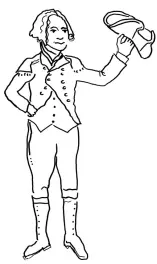 My children and I spent a few hours walking slowly down a shallow creek in Ohio looking for arrowheads. We didn’t find any, but we talked a lot about the people who lived in the quiet suburban area a long time ago. We talked about how they felt the same breezes, walked the same paths, endured the same weather. We thought about how our clothes were different (materials, production, quantity) but similar in that they had to protect the wearer from the cold in winter and the mosquitoes in summer. We all agreed that those are challenges we probably shared. We talked about food sources, building materials, and potential conflicts with other groups. We found plenty we might have had in common with our ancient ancestors, even though so much has changed.
My children and I spent a few hours walking slowly down a shallow creek in Ohio looking for arrowheads. We didn’t find any, but we talked a lot about the people who lived in the quiet suburban area a long time ago. We talked about how they felt the same breezes, walked the same paths, endured the same weather. We thought about how our clothes were different (materials, production, quantity) but similar in that they had to protect the wearer from the cold in winter and the mosquitoes in summer. We all agreed that those are challenges we probably shared. We talked about food sources, building materials, and potential conflicts with other groups. We found plenty we might have had in common with our ancient ancestors, even though so much has changed.
Kids love imagining what life was like a long time ago. It helps to be outside, to touch and hold and walk among the sights and smells of the present and the past. History teachers love books, but they also love active experiences. Here are five things we do when we have a “home history” lesson.
1.) Get outside! After reading about a topic we get out there and imagine what it might have been like for the topic we have been studying. For instance, if we are studying a war, we might go out and assess terrain and how hills, valleys, and vegetation might impact decisions made during a battle.
2.) Re-enact! Does your child love drama? We like to write short plays about a topic we have just learned about and then produce them. We find props and costumes in the house and then put on the play. As the mom/teacher, I’m usually the only member of the audience, but we film it and send it to grandparents as proof that we did it!
3.) Create! After learning about a nomadic culture, we went outside and tried to create a weatherproof structure that would keep us safe from bears and marauders throughout the night. (Full disclosure: these were imaginary threats, we actually live in a very safe area). We gathered sticks, clay (from the creek), and long grasses and made a rudimentary hut. The kids had a blast a new appreciation of how hard it is to create a shelter!
5.) Art! Using a visual representation of what has been learned is a great way to remember and think about major concepts. Kids can make a cartoon strip, paint a picture, or work together on a mural. We try to add as many details as possible about our topic and then teach someone about the topic by explaining our creation.
5.) Cook! Almost every time period you might study has recipes that can be found and recreated in the home. We had a great time making recipes from some of the food we read about or spotted on the pages of picture books while studying colonial times. We were easily able to find recipes and cook up treats for ourselves. We tried to do as much of the work as possible by ourselves. Food is a great way to talk about what was available and why, who did the work and why, and what it took for people to remain nourished and healthy during a specific time period.
American history is such a great way to be active, outdoors, and creative. Read a few awesome books and then DO!
